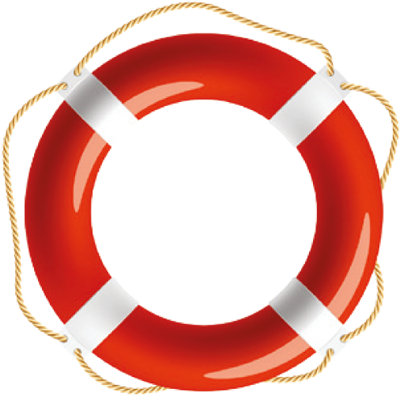

cprlifesaver’s … “Comparative” Analysis … an explanation
“The concepts of our cprlifesaver application have arisen from many years of active involvement with the NZ Local Government sector … and along the way, deriving an understanding of … what makes them tick.”
Concepts … the use of “Comparatives”
We are often asked to explain the basis of our cprlifesaver analysis and reporting. Happy to do so … as we are confident that this “explanation” will also go a long way to confirm the validity of our approach.
The cprlifesaver application is the premium-default New Zealand Council financial and economic tool of planning and budgetary analysis.
It is designed mainly for use by Councils in their setting of principled, rational and optimized Council budgets within their annual and long term planning budget cycle-process.
cprlifesaver delivers its reporting of NZ Territorial and Unitary Councils financial performance as measured by using the long standing principles built into all performance benchmarks:
… A benchmark is defined as …
“a standard or point of reference against which things may be compared or assessed”.
Our cprlifesaver comparisons are a form of “benchmark” … but read “cprlifesaver comparative data and reporting” … and our comparisons work in the following fashion:
cprlifesaver comparative analysis is predicated on the fact that all New Zealand Councils have exactly the same business model.
Note that within commercial firms, the marked differences in their markets, businesses and operations, often preclude useful benchmark or comparative analysis, as every firm’s business model is different.
Not so for our Councils.
Fortunately for our cprlifesaver developments we are dealing with a defined number of uniform types of Council organizations that lend themselves very satisfactorily to our form of analysis.
This uniformity is due to the fact that all NZ Territorial and Unitary Councils have to deliver similar-“comparable” services along similar standard lines as dictated by the Local Government Act 2002 and its amendments.
This model is statutorily set … for example:
- In general terms by the “Purposes” clause: S. 14 Principles relating to local authorities ss (1), (h) LG Act 2002 and;
- With numerous other specific accounting-related statutory activity requirements including;
- Directions to deliver specific services within a standardized significant activities accounting and reporting framework such as for;
- Revenues, Expenditures and the Assets & Liabilities within a Council Statement of Financial Position context.
- Statistics NZ provide every year a set of unvarying reportage of Council audited financial results. A large proportion of the cprlifesaver data is derived directly from Statistics NZ. cprlifesaver data and reporting benefits from this strict control and consistency.
These unique “standardized” settings mean that our cprlifesaver’s NZ Council comparative performance framework can claim a fully “comparative” base of data for its analysis. NZ Council comparisons in the cprlifesaver context therefore form a viable base for Council performance assessments.
The cprlifesaver capabilities
Here are some specific uses of cprlifesaver comparative performance data … of Council financial results including:
- LTP and Annual plan budgets, targets and other optimum-seeking financial performance assessments (mostly for external reporting);
- management oversight of all significant activity operational expenditures and sources of revenue (internal organizational practices decision making);
- evaluation of balance sheet positions concerned with managing Council’s investment in assets, evaluating ratepayers equity and managing a Council’s current and term debt and;
- many other assessment criteria
A real life example
There are a myriad of uses for our cprlifesaver application. Here is one real life case study.
For an example … Answering pesky ratepayer’s difficult performance-related enquiries … such as an irate ratepayer at a Council election meeting:
Ratepayer: “Our [expl del] rates are too [expl del] high!”
The CEO refers to her cprlifesaver FAQ’s and the many other cprlifesaver rates-related reports and off her cellphone-device, responds with an instant, independent third party, totally verifiable come-back.
CEO: “Wrong! Mr Ratepayer. Our Council is one of the better lower rates Councils… in fact we are 5th of 20 in our Rural group…”
(Whispers … “So there!”).
This case study provides just one of the reasons that justify using a cprlifesaver benchmark-budget setting approach by Councils.
Design particulars of cprlifesaver
The design of our cprlifesaver application-covering all 67 NZ Territorial and Unitary Council financial and (some) economic statistics … with other relevant data is arranged so that the comparative analysis of this vast range of financial and other data can be usefully sorted, sifted, grouped and reported applying to:
- all of the (396 reports – 101 measures) of the cprlifesaver application classified within cohorts of:
- the whole population of 67 Territorial and Unitary New Zealand councils;
- subdivided into standard groups … of which there are five and;
- and are reported for the individual council.
All local authorities are placed within this cprlifesaver “grouped comparative” context. The cprlifesaver site at https://cprlifesaver.co.nz/faq-info-and-extras/ lists the details of the five cprlifesaver “groups”.
Before giving an example of the use of our comparative techniques, it is essential to explain two important cprlifesaver constructs … these are key to our cprlifesaver analytical process.
Two Constructs
Firstly:
We report extensively on a per ratepayer basis. This has the huge advantage in dealing, as we do with Council comparisons … of normalizing-standardizing our data over all Councils. Each Council, no matter its size and complexity, is reported on the same basis …the per ratepayer view.
Using the per ratepayer base has another “plus”. After all, it is the ratepayer who pays for Council services so their sensitivities to costs should come within our (per ratepayer) assessments.
Using a “per ratepayer” measure, the collective “We” … can all see the relative dollar effect of these measures at the level of the person-ratepayer most affected by any financial policy. This basis directly discloses the dollar effect of any proposed financial policy change. The per ratepayer basis therefore allows for valid (normalized- standardized) and grounded performance improvement assessments to be made.
Secondly:
While all individual Council results are reported we have, as detailed already, established the five standard Council comparative groups. We have based these groups on assessments of their similar sizes (populations principally) and character … for example a Rural Council as opposed to a City.
Both the per ratepayer and the Group Council reporting concepts add to the strength and validity of our cprlifesaver analysis.
A Library Activity – a cprlifesaver case study:
To assist with your understanding of the use of the cprlifesaver application we have prepared a real-life “Council Library Services” example of how our cprlifesaver process works “in action”.
Note: all data identified below *** is readily available for your own analysis. This reporting can be obtained directly from standard cprlifesaver application reporting … or now, with your own customized reporting … from our new Report Generator.
Our case study concerns the Whanau Council, who while reviewing the data and reports of its cprlifesaver application covering its own Library-Significant Activity- operations, finds that its total library expenditures …
- On a Whanau Council (individual Council-total) basis, for its many libraries – reported as a single significant activity … their “Libraries” expenditure total is historically high, up on last year and now highest of the last five years. ***
- All of this detailed (above) data is covered by standard cprlifesaver reports … that is, reporting of the actual “total” current and five years history of the Whanau Council Libraries total expenditures.***
- On a Whanau Council (per ratepayer) basis, and as reported as a significant activity … the “Libraries” expenditure per ratepayer is historically high, up on last year and highest of the last five years. ***
- All of this data is included in cprlifesaver reports … that is, the actual totals of current and the five year history of the Whanau Libraries total expenditures.
- Whanau Council’s cprlifesaver results, within its peer Group (say Rural) library expenditures per ratepayer are now highest, up from last years … from 3rd to 1st highest of the group of 24 rural Councils.***
- Iwi and Hapu Councils by comparison have better all round Library operational costs comparisons. ***
- Payroll costs (both in total and per ratepayer) for the Libraries seem to be out of line with both sector and peer group norms.
*** The 2020 cprlifesaver special report titled “Payroll Study” – (34 pages 104 reports) gives all of the evidence needed to take forward further library payroll cost investigations and possibly new budget-setting projects.
Do you get the picture?
There are a number of other techniques for the use of cprlifesaver reported findings … sufficient enough data and findings to advance valid observations about “how your Council fares” using these comparisons.
Your Council can then take steps to investigate and if appropriate take the necessary (remedial) actions.
These may address the increase of library costs and tactics may include the following strategies:
- In-house: Informed by all relevant cprlifesaver reporting, Internal audit, executive management, library staff participating in a Libraries cost justification/assessment/reduction project. As the major part of library costs are personnel costs (payroll) the HR input, based on their specialized library payroll benchmarking will be vital to the decision-making.
- Encourage library management to seek reasons/improvement strategies for library operations from their peers at Librarian conventions, sector special interest forums, by telephone and from further contacts for study of focused cost management of library operations and library management education.
- External: Enquire of your best peer Councils … Ask … “How do you do it?” Seek specialized third party advice on these issues.
So there it is.
Questions or comments on all aspects of this Blog are welcomed. But … if there is a better way (Good Luck with that) … or if you can suggest improved modifications or additions to our cprlifesaver techniques or processes then we are always … in a collegial sense … very happy to hear of them.
Larry Mitchell, 17 August 2021
Phone: 0274 792 328
